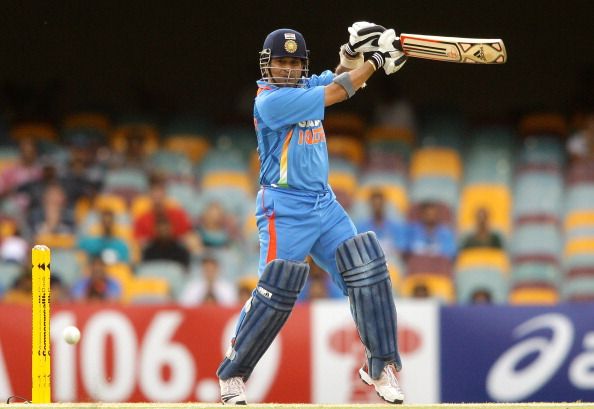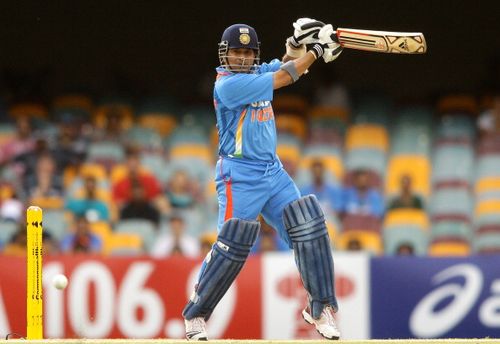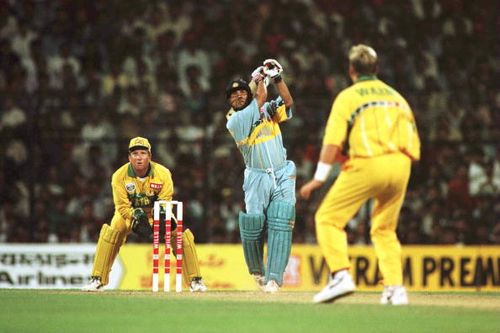
Sachin Tendulkar: The numbers are misleading

Critics and detractors fervently grope in the dark, scrupulously searching in anguish for the chinks in his armour. The very fact that you need mathematicians and statisticians for belittling someone tells a tale or two. One, the apertures in the aegis is well veneered under the brilliance that overshadows it and two, the pinnacle his greatness is at, requires such rigorous arithmetic to disparage it. When the common man is in desperation to walk away from the herd, he looks to challenge the convention; he often resort to such calculations and in the desperation to prove his conviction, he conveniently commissions off certain facts and allowances. Contemplating at busting certain myths, demystifying the mysteries, they fall prey to myopia. One such cases of myopia (short sight) is the measure of a batsman or an innings in cricket.
Ever since I started reading about cricket, one thing that has befuddled me is the yardstick to measure an innings. It’s startling how bigwigs such as Wisden have been the brainchild of such bizarre ideas. Wisden India Almanac did the marathon in 2000 and went about releasing the top 100 Test innings. In a major controversy, which some construe to be even marketing gimmicks, the list did not include a single innings of Sachin Tendulkar in the top 10. This thoroughly disregarded his stature, his stardom and even derided his numbers. This came as a slap to some of his fans and let to widespread unease. This bolstered the brand Wisden and it did reach out to the grass root strata of the society, something even Wisden ceased to dream in its infancy. The spokespersons of Wisden stood by their rankings and revealed the modus operandi for arriving at such ludicrous rankings. Innings which contributed to wins received a much larger weighting than the innings that contributed to losses or draws. This theory has been a bitter pill to swallow. To this engineer, this has been one of the hardest postulations to account for.
Playing under pressure, stomaching the mounting pressure and excelling is certainly heroic. When the pins are down, when in despair, playing a match saving knock and winning the match is even more heroic. The fortitude certainly deserves to be lauded. Leverage to such situations is certainly called for. When the floodgates have been opened, someone who revels under it deserves the plaudits. Such efforts have been rated high and the ranking is in accordance with this conviction. Where the ranking has gone awry is that the end results of such efforts are given more weightage than the effort itself.
Cricket has been abound with such tenacious and diligent efforts. Efforts that have led to an eventual sealing of the game have been regarded highly and efforts higher on the fortitude quotient, with the result tilted, have been thoroughly disregarded. In many a cases, such innings have come under demanding and testing times with only the result reading a loss. When the conditions have been testing and the entire set of batsmen scratching beneath the surface, there might have been one lone survivor who would have tamed the raging bull. In the 2008 Test series in Sri Lanka, Ajantha Mendis spun a web and bamboozled the Indian batsmen. The Indian batsmen fell like nine pins, with Virender Sehwag the lone star. He took the attack to Mendis and scored heavily. The series went awry, with India losing 2-1. In line with the above hypothesis, the efforts of Virender Sehwag would be denigrated and undermined. Coming to the point and talking about Tendulkar, the knock of 175 against Australia at Hyderabad, chasing a mammoth 370 odd, was an astonishing effort. When the entire team lacked the heart to stand upright and chase down the target, this little master caught the game by the scruff of its neck and was well on course to win the game. With the asking rate below 7 and 5 wickets in hand, it was a piece of cake for any team. Yet, the team failed to chase it down and India lost the game. Does this by any means undermine Tendulkar’s knock? The answer is a stern no. The 134 against Pakistan at Chennai is another point in case. With less than 15 runs to win and 5 wickets in hand, the team succumbed to some insane shots spearheaded by Nayan Mongia. It brings to fore the inefficacy of his team mates and accentuates his brilliance. Wisden, sticking to their conviction, would have totally neglected this knock.

Consider this scenario. A pace bowler has been spitting fire and is at his venomous self. He has managed to castle every batsman and the team is at an egregious spot, with just one opener surviving the spell. The team is bundled out for, say, 200 with the opener scoring a 100. Given the shortcomings of the side, the opposition mauls the team without the loss of a single wicket with 15 overs so spare. Wisden or other rankings would brush aside this effort as a knock in a ‘losing cause‘. The tenacity of the batsman who survived the strenuous spell would be demeaned. This is appalling. No batsman bats to lose. Cricket, being a team game, has its result dictated by various factors and not just by one batsman.
A knock needs to valued in terms of its technical nuances. When Warne was befuddling an entire generation of batsmen, Tendulkar outfoxed him. The umpire standing witness to it conceded that it was the most enticing cricketing contest he had ever seen. He was the most experienced umpire and had seen generations of batsmen. Such views need to be taken into account before jumping to conclusions. He was at the receiving end too. McGrath broke the stack of technical brilliance of Tendulkar and had him dismissed thrice in the 2001 home series. Such efforts go down the drain due to the obsession with results.
There has been a hue and cry over Tendulkar’s knocks in a winning cause. There was this beautifully written article which had dissected Tendulkar’s numbers and an analysis entailed. Though it was a delight to read, on the logical front it wasn’t very convincing. The author had counted the number of matches won and the number of centuries in a winning cause and arrived upon an average. This totally neglects the knocks that had gone in vein because of the incompetence of his fellow players. A batsman from Bangladesh might have made 40 centuries in hundred games with only 10 of them resulting in a victory. His average would be below one, a dismissable figure. Yet, his efforts would be dismissed as centuries in a ‘losing cause’. The very term ‘losing cause’ is misleading. The cause isn’t for losing. There have been statistics about winning percentage and losing percentage, and to be honest, that is just downright rubbish.
Tendulkar’s greatness can never be belittled on any account. He will remain the epitome of batting. When the Indian team was in need of a batting hero who would destroy and mutilate the bowling attack, Tendulkar broke the glass ceiling and broke onto the scene. He gave a new face to the Indian team and carried upon his shoulders the burdens of a billion. 100 centuries isn’t a joke and every run of it was played with the intention to win the game.
I wish such myopic measurements be got rid of. The situation of the game and the contribution of the other batsmen and the caliber of the bowling attack should be given due importance and the obsession with the result be overcome.